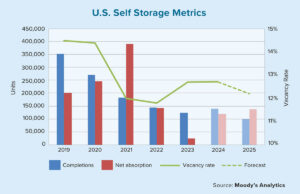The mortgage market appears to be transitioning from the highly profitable refinance business that drove revenue early in the COVID-19 pandemic to a purchase-oriented one that can be more complicated. Mortgage originators and lenders need to adjust their strategies to compete in this environment.
A refi slump is expected this year with the anticipated rise in interest rates. Refinances are projected to decline from 53% of all loan originations in fourth-quarter 2021 to 28% in the final quarter of this year, according to a January 2022 forecast from the Mortgage Bankers Association. What’s more, margins are getting tighter and regulatory scrutiny feels poised to increase. Both present challenges for nonbank lenders in particular.
In November 2021, risk assessment company
Fitch Ratings warned of the coming challenges in an article on its website. The company noted that rising rates fueled by the tapering of Federal Reserve asset purchases, along with home-price appreciation tied to the growing disparity of supply and demand, are expected to contribute to lower sales volumes and profit margins in 2022. “Large-scale originators should remain profitable, but a challenging operating environment could force consolidation among smaller companies,” analysts wrote.
Although consolidation may be a solution for some, it won’t work for everyone. But there’s no reason to despair. Mortgage lenders and originators can successfully pivot from refinances to purchase originations by expanding their products beyond their usual lending demographics and casting a wider net that captures the minority buyer potential. They also should lean harder on digital workflows and upgrade their skills to address needs in today’s market.
Changing population
To put it bluntly, the future of the housing market is no longer simply white men. Minorities will serve as the engine of U.S. homebuying. The future homeownership growth will come mainly from non-white households, with Hispanics accounting for 70% of homeownership growth over the next 20 years, according to the Urban Institute.
In the next five years, 75% of new first-time homebuyers will be women, people of color or millennials, according to the National Association of Minority Mortgage Bankers of America.
In the 31 largest metropolitan areas, there are some 1.7 million Black millennials who would qualify for a mortgage, according to Freddie Mac. New York City, Atlanta, Washington, D.C., and Chicago each have more than 100,000 Black residents who are ready for homeownership.
To be sure, the growth in Latino homeownership isn’t something that just crept up during the pandemic. More than half of all homeownership growth over the past decade has come from the Latino population. After the housing crisis of the late 2000s, Latino homeownership rates dropped to a low point of 45% in 2014, according to data from the National Association of Hispanic Real Estate Professionals. But the rate has steadily risen and reached 49% by 2020, about the same as it was before the Great Recession.
If you’re a mortgage originator, you need to continuously upgrade your skills, because a lot of what you’ve been doing in the past is being commoditized through technology.
In addition to the Hispanic homeownership surge, single women are proving to be a powerful force in the housing market. They account for ownership of about 5.2 million homes in the nation’s 50 largest metros while single men own about 3.6 million homes in these areas, according to census figures analyzed by LendingTree. In fact, this trend is so hot that The New York Times recently referenced the “houses before spouses” phrase that is defining the movement.
With the shift already underway, lenders and originators need to prepare for how to best serve these segments of homebuyers. It is important to understand the unique cultural nuances of the minority homebuyer base, which often means recognizing the racial disparities behind a lack of credit history or savings patterns. One of the best ways for lenders to prepare is to hire a sales team that culturally and ethnically mirrors the communities being served.
Embracing technology
The second step that lenders should adopt is the use of technology to differentiate themselves from the competition. A recent ICE Mortgage Technology survey on borrowing and lending found that the pandemic has permanently changed the way consumers utilize technology, and those looking to buy or refinance a home are seeking lenders that offer online tools to complete their mortgages from home.
There also has been a shift on the consumer side to embrace technology that addresses bias in underwriting. Studies show that digital, algorithm-based mortgage solutions discriminate less often than more traditional lending models (about 40% less, in fact), ultimately enabling more approvals for people of color as well as lower loan costs for these borrowers.
And it’s not only technology investment that will drive successful teams going forward. If you’re a company leader, you need to invest in people. If you’re a mortgage originator, you need to continuously upgrade your skills, because a lot of what you’ve been doing in the past is being commoditized through technology.
Executives need to identify what their originators need to compete in this faster and smarter environment. A lot of things that originators used to do in the past, which used to take up the majority of their time on the job, have already been replaced by technology.
For example, taking loan applications over the phone has been replaced by point-of-sale platforms, while what used to be a rate quote from an originator has likely been replaced by an online product and pricing engine. This means that continuous upgrades to skills is a key for remaining competitive in this ever-evolving market. An originator should evolve from being a simple application taker to serving more as a consultant or adviser. This is what the future of the mortgage originator looks like.
● ● ●
So, there you have it. Lower refinance volume is nothing to be afraid of. In fact, reframe it as an opportunity to work on upgrading your skills and technology while focusing on minority homeownership opportunities. By doing so, you will build a solid, sustainable and scalable business model to excel in 2022 and beyond. ●
-
Shashank Shekhar is CEO of InstaMortgage, a San Jose-headquartered mortgage company doing business under Arcus Lending. Shekar started the company in 2008 during possibly the worst year for financial markets. Despite the adversity, Arcus Lending has grown rapidly and was named in 2017 to the Inc. 500 list of the fastest-growing private companies in the U.S. Shekhar writes a popular blog and is an expert guest on the TV and radio show, “Mortgage Matters.” He has ranked on numerous lists of the top originators in the U.S.
View all posts





